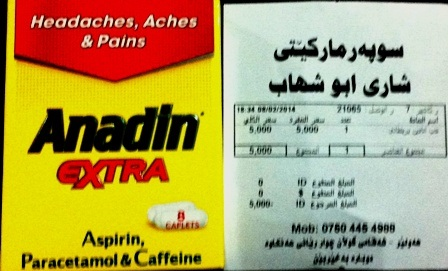مما لاشك فيه ان اي قانون او قرار او تعليمات تصدر تعتبر ضرورية فى اي وقت
لتنظيم كل ما يتعلق بمجال معين. وهذا يعتمد على نتائج ملء الفراغ القانوني والتطور
الحاصل لذلك المجال فى الوقت المناسب.
وكان صدور قانون الاستثمار رقم (4)لسنة (2006) . وبعد توحيد الادارتين ،
عملية تحرير العراق ، انتعاش الحالة الاقتصادية و استتباب الامن فى اقليم كوردستان
من اولويات العمل لحكومة الاقليم , وهو
احد القوانين التى خطت لها حكومة الاقليم خطوة سريعة فى الوقت المناسب.
ولانريد ان نقيٌم هذا القانون وما انعكس منه من ايجابيات على بعض النواحي
الاستثمارية مع ما موجود من نواقص و ضرورة تعديلها. بل نريد ان نسلط الضوء على هذا
القانون وتاثيره على القطاع الزراعي ؟
ولكن الى اى مدى استطاعت حكومة الاقليم استثمار رؤوس اموال الشركات الاجنبية
و جلب التكنولوجيا الحديثة والايدى العاملة المتخصصة الى كوردستان!
و نريد ان نوضح ونطرح هذه الاسئلة على القراء والجهات ذات العلاقة ,على امل ان تشير
الحقائق الى وضع حلول ناجحة لتطور وتنمية هذا القطاع الحيوى الذي يقوى البنية
التحتية الاقتصادية و يؤمنها.
وفقا لما حصلنا عليه من معلومات و
احصائيات منذ1/8/2006 حتى 3/6/2014 و مراجعتها فقد تبيَن:-
من مجموع (687) مشروعات تم الحصول على الموافقة لتنفيذها و خصص لها ميزانية
قدرها (39.226.897) مليار دولار , علما بأنها تتضمن (25) مشروعا فقط خُصص لها
ميزانية تقدر بـ (704.161.731) مليون دولار . اى ان نسبة 3.6% منها فقط مشاريع
زراعية وان نسبة 1.7%فقط من ميزانية المشاريع الاستثمارية مخصصة للمشاريع
الزراعية.
ومن مجموع هذه الــ (25) مشروعا .فقط (13)مشروعا نُفذ او فى طريق للتنفيذ و
الباقي لم ينفذ لاسباب مختلفة منها فسخ العقود و غيرها.
وفى الـ (13) مشروعا الذي تم تنفيذه يوجد منها (8) مشروعات مخصصة للثروة
الحيوانية و الداجنة و (5) مشروعات مخصصة فى مجالات البستنة ، البيوت البلاستيكية ،
انتاج الفطر و جميع المشروعات المنفذة نُفذت من قبل مستثمرين محليين عدا مشروع
واحد فقط تم تنفيذه بصورة مشتركة من قبل مستثمر محلي و آخر اجنبي.
ولو امعنا النظر في عدد المشروعات فى القطاعات الاخرى , نرى ان للقطاع
الصناعى نال (175) مشروعأ ،قطاع الاسكان (164) مشروعأ ، السياحة (121) ،التجارة (107)
و الصحة (40) مشروعأ.
وهذه الاعداد تشير الى انه ليس لقانون الاستثمار دور فعال على تطوير القطاع
الزراعى او بالاحرى بناء البنية التحتية الاقتصادية فى اقليم كوردستان, والذى من
المفروض و المطلوب ان يبلغ الحد الادنى على الاقل من التطوير و التنمية لهذا القطاع ،هذا
بالاضافة الى تخصيص نسبة قليلة من الميزانية له. وهناك اسباب اخرى بيئية و
اجتماعية و ادارية.
ومن اهم الاسباب الرئيسية فى عدم تطور و تنمية القطاع الزراعى من وجهة نظري
كمهندس زراعى مسئول لفترة طويلة في هذا
القطاع هو عدم انعكاس قانون الاستثمار على القطاع الزراعى وهذا يعود الى الاسباب
التالية:-
1. عدم وجود ستراتيجية و نظرة واضحة من قبل حكومة اقليم
كوردستان لهذا القطاع المهم .وهذا يظهر بشكل رئيسى من نتيجة عدم تخصيص ميزانية
سنوية مناسبة لها.
2. لم تكن لهيئة الاستثمار منذ البداية رؤية واضحة فى تحديد
القطاعات المهمة و اولوياتها لاقليم كوردستان كى تتمكن من تشجيع الاستثمار من هذا
المنطق.
3. من طبيعة المشروعات الزراعية انها تحتاج الى فترات طويلة
للوصول الى مرحلة الانتاج و الاهداف وجنى
الارباح المرجوة منها. بالاضافة الى المخاطر الكثيرة التى تحلق بها لذا فأن
المستثمرين و بالاخص الاجانب لايحبذونها و يبتعدون عنها.
4. مشكلة تخصيص الاراضى و عدم تسوية ملكيتها و بعض المشاكل
الاجتماعية و السعي لتخصيص قطعة ارض مناسبة لكل مشروع من أهم المعوقات التى تقف فى
طريق الاستثمار فى هذا القطاع .
5. الاستثمار فى القطاع الزراعى تتعرض الى مخاطر كثيرة بعكس
الاستثمار فى المجالات الاخرى( التجارة , الاسكان ,الصناعة , والسياحة) فانها لا
تتعرض الى مخاطر كثيرة , بل ان مخاطرها اقل بالاضافة الى انها يمكن الحصول على
ارباحها بفترات قصيرة وبلا مشاكل و مخاطر.
فى الواقع اهمية تنفيذ المشروعات الزراعية تكمن فى الامن الغذائى و تأمين
بيئة زراعية خضراء و صحية و هذا يعتمد بالاساس على الاستثمار فى هذا القطاع .لذا
على حكومة اقليم كوردستان ان تسعى وبخطوات حقيقية لحل المشاكل و المعوقات الأنفة
الذكر . ونقترح على حكومة أقليم كوردستان و جميع الاطراف السياسية و الشركات
المحلية الكبيرة ايجاد ارادة مشتركة للاستثمار فى القطاع الزراعي لانه استنادا الى
احصائيات وزارة التخطيط فان نسبة المحصول الزراعى فى الاقليم سنويأ تصل الى 10% فقط من الإيراد القومى.
علما بان نسبة 23%من محصول الخضراوات ، 75% من الفواكه ، 67%من اللحوم
الحمراء ، 32%من لحوم الدواجن و90%من لحوم الاسماك تتم استيرادها من الخارج . هذا
ماعدا المحاصيل الزراعية الاخرى كالارز ، الحمص ، العدس ، الجوز و علف الحيوانات
والدواجن ........الخ) و التي تستورد بنسبة اكبر .
لذلك على حكومة الاقليم ان تولي اهتمامأ اكثر بالمستثمرين المحليين . وان
تقوم باتباع ألية مناسبة وسهلة لهذا الغرض , على امل ان تتمكن من تخصيص نسبة من
ايرادات النفط لخدمة هذا القطاع الذي يؤمن الامن الغذائي لأبنائنا و اجيالنا
القادمة الان وفى المستقبل .وعلى امل مستقبل مشرق لتنمية و تطوير القطاع الزراعى.
حسين حمه كريم
مدير عام البستنة
والغابات والمراعى
18.6.2014





